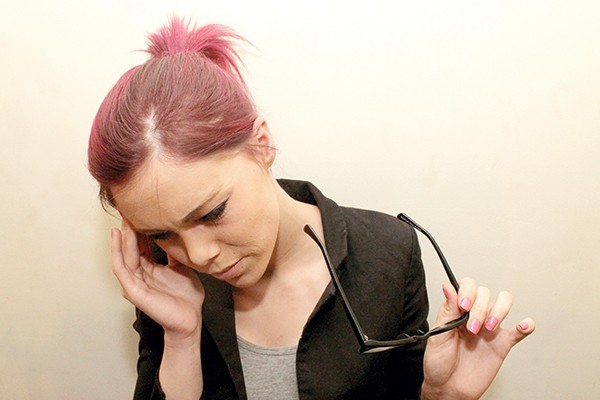
To mark ‘Brain Awareness Week’ (March 7th – 13th), NewsFour attended an information seminar hosted by Migraine Association of Ireland (MAI) at the Plaza Hotel, Tallaght.
Speakers on the day included Esther Tomkins, Clinical Nurse Specialist at Beaumont Hospital; and MAI member Mel Farrell who talked about his experiences as a sufferer.
The event also featured information stands on complementary therapies such as yoga, biofeedback and acupuncture.
Migraine is arguably one of the most underestimated conditions in existence. The World Health Organisation ranks migraine as the sixth most disabling disease worldwide and classifies severe attacks as among the most disabling illnesses, comparable to dementia, quadriplegia and active psychosis.
At the same time it is still widely misunderstood among the general population, teachers, employers and even GPs; and many of the attendees felt that lack of awareness has fostered a stigma to become attached to the condition.
When giving his presentation about his experiences, Farrell related, “People used to say to me, ‘Migraine? That’s, a woman’s problem.’ (It is three times more common in women) I always felt they didn’t believe it was that bad and expected me to, ‘Just suck it up,’” Farrell tells the attendees who were all nodding in agreement.
Farrell actually spent most of his life hiding the condition and described situations where it was assumed he was just hungover or causing the pain to himself by ‘eating chocolate,’ adding, “I’d take a hangover above migraine anyday.”
There are many myths associated with migraine and some members of the audience drew comparisons between the attitude society has towards depression and migraine and the shame that may be endured as a result of this. ‘It’s not just a headache,’ is the frustrated mantra of migraine bearers far and wide and further to this, the headache part may not even be present at all.
It is a highly complex condition triggered by a wide range of factors and headache is a possible feature but is not essential for a migraine to be taking place.
Any two of the following symptoms could be an indicator: numbness of the head, face or limbs; sensitivity to smells leading to nausea; vomiting; photophobia; or phonophobia (sensitivity to light and sound).
About 20% of people experience migraine ‘aura’ during an attack. Aura refers to a range of neurological disturbances that are usually visual, such as flickering lights or blind spots, but can also present as muscular weakness, numbness, slurring of speech, and loss of coordination or confusion. In cases of severe migraine, the person can experience paralysis and loss of consciousness.
Diagnosis can be difficult, particularly if the patient is a child or if the headache is absent, and one attendee suggested that GPs should come to these seminars.
Tomkins told the audience she recalled cases where teeth have been pulled out in error, as an example of how secondary symptoms can impede detection.
NewsFour was told about the feeling of isolation and loneliness experienced by many sufferers and how events like this are a source of comfort as well as a means to gathering the tools and tips to deal with life as a migraine sufferer.
If you have been reading this and noticed a familiar trait in your own life, help is at hand. Most GPs will be able to prescribe appropriate treatment. However, migraine is unique to every individual and the behaviour of the condition often does not remain static. Migraine attacks are episodic, so while some people experience only one or two attacks a year, others suffer on a weekly or even daily basis to the extent that their quality of life is substantially reduced.
You may recognise yourself in the symptoms listed here but a positive diagnosis may have eluded you. The MAI exists to provide information, support and reassurance to migraine sufferers and their families. In addition, they facilitate health professional training and advocate for research and access to services. They can also refer individuals to one of the five specialist clinics around the country which they were instrumental in setting up.
‘What’s Under the Hat?’ – a European headache awareness campaign was launched by the European Headache Alliance to raise awareness of the impact and burden of headache disorders. The ‘What’s Under the Hat?’ campaign aims to highlight the disabling impact of living with migraine and other primary headache disorders, while emphasising that help is available through national patient organisations. Headache sufferers are encouraged to share their stories via social media using the tagline #underthehat.
To hear stories and learn more about the campaign, visit www.underthehat.eu or follow #underthehat on Twitter, Facebook and YouTube. Contact: whats@underthehat.eu
For further information: www.migraine.ie. Helpline: 1850-200-378. Email: info@migraine.ie
By Maria Shields O’Kelly



